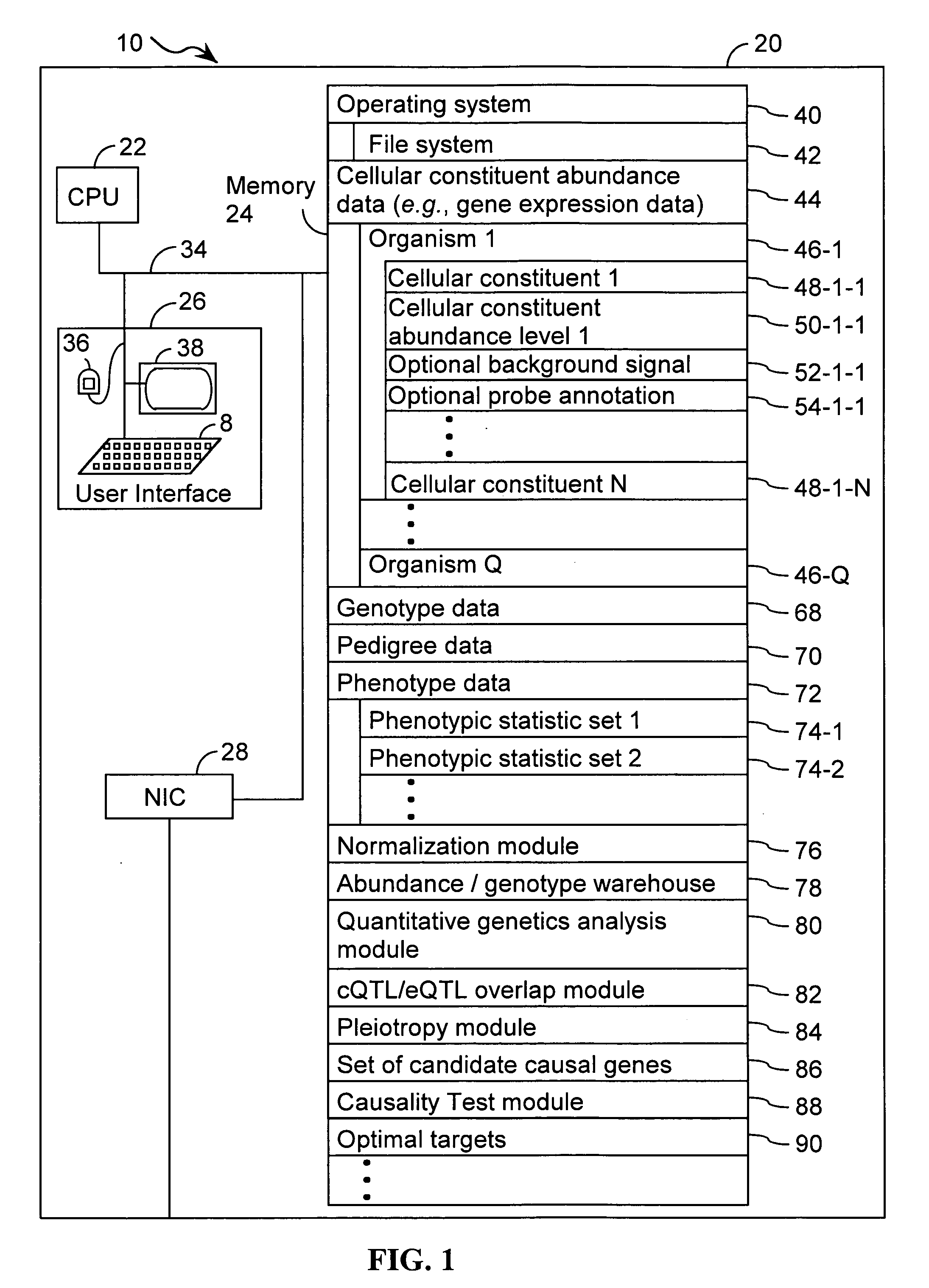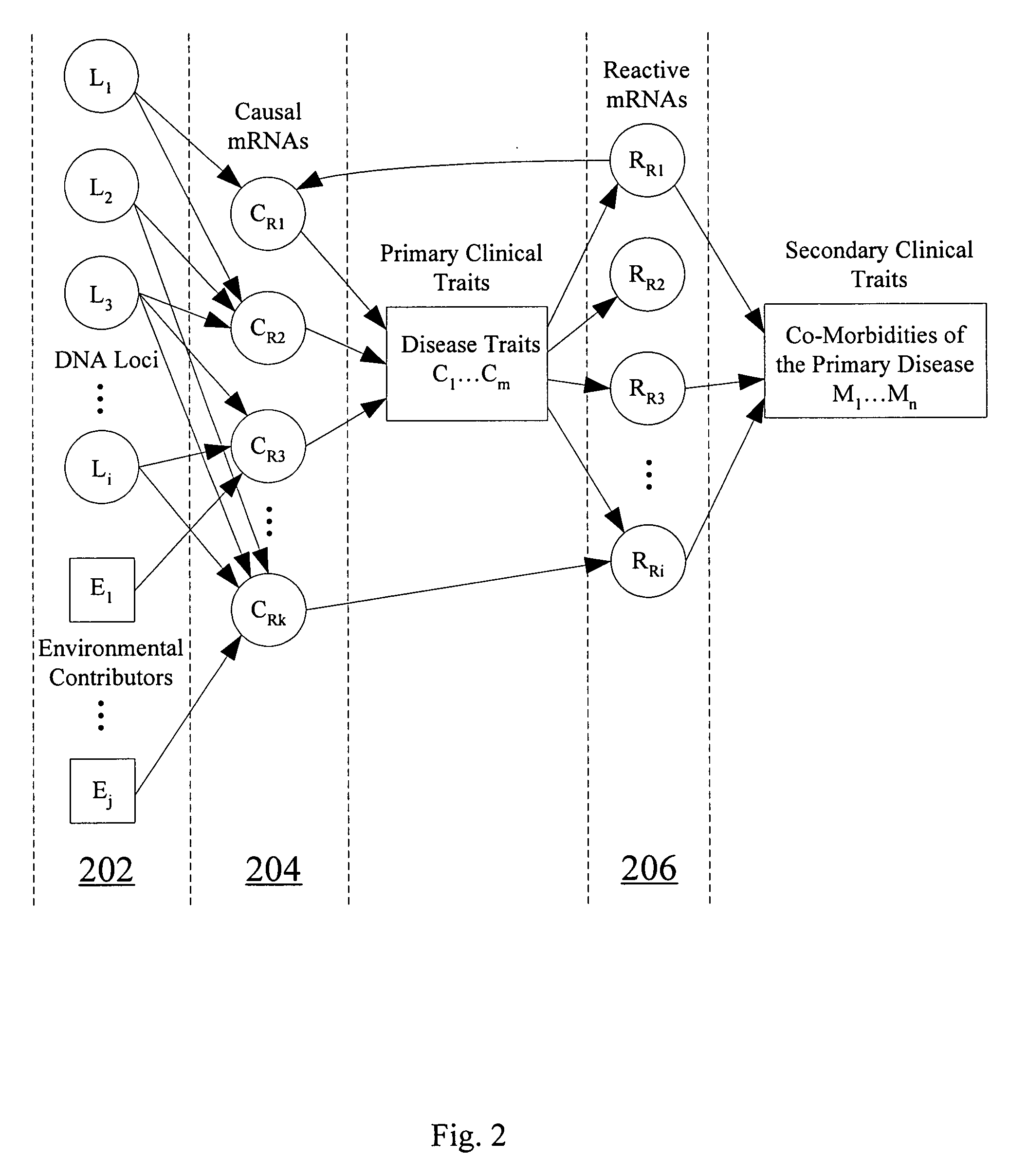Computer systems and methods for inferring causality from cellullar constituent abundance data
a technology of cellullar constituents and abundance data, applied in the field of computer systems and methods for identifying genes and biological pathways associated with traits, can solve the problems of inability to quickly and easily achieve high-throughput processes, the validation method is not easily adapted to high-throughput processes, and the use of cellular constituent abundance data as a tool to identify genes responsible for traits,
- Summary
- Abstract
- Description
- Claims
- Application Information
AI Technical Summary
Benefits of technology
Problems solved by technology
Method used
Image
Examples
first embodiment
5.1.1.1. Subdividing First Embodiment
[0292] The following section describes an embodiment of the present invention and is made with reference to FIG. 48. While the subdividing embodiment can be used as a precursor to the causality test described above, it will be appreciated by those of skill in the art that the subdividing embodiments described in Section 5.1. 1.1 and 5.1.1.2 can be used to divide any population into genetic subgroups that can then be studied using any quantitative genetic analysis technique in order to identify QTL that are linked to phenotypic traits (e.g., diseases) of interest.
[0293] Steps 4802 and 4804. The independent extremes of the population with respect to a particular quantifiable phenotype (e.g., complex trait) are identified. In one embodiment, an organism is within the group that represents an independent extreme with respect to a particular phenotype (e.g., complex trait) when the magnitude of the particular phenotype exhibited by the organism is gr...
second embodiment
5.1.1.2. Subdividing Second Embodiment
[0301] This section describes additional methods for subdividing a population exhibiting a complex disease into subpopulations in conjunction with FIG. 53.
[0302] Step 5302. In step 5302 (FIG. 53A), a trait is selected for study in a species. In some embodiments, the trait is a complex trait. The species can be a plant, animal, human, or bacterial. In some embodiments, the species is human, cat, dog, mouse, rat, monkey, pigs, Drosophila, or corn. In some embodiments, a plurality of organisms representing the species are studied. The number of organism in the species can be any number. In some embodiments, the plurality of organisms studied is between 5 and 100, between 50 and 200, between 100 and 500, or more than 500.
[0303] In some embodiments, a portion of the organisms under study are subjected to a perturbation that affects the trait. The perturbation can be environmental or genetic. Examples of environmental perturbations include, but are ...
PUM
| Property | Measurement | Unit |
|---|---|---|
| body weight | aaaaa | aaaaa |
| green fluorescent protein | aaaaa | aaaaa |
| red fluorescent | aaaaa | aaaaa |
Abstract
Description
Claims
Application Information
 Login to View More
Login to View More - R&D
- Intellectual Property
- Life Sciences
- Materials
- Tech Scout
- Unparalleled Data Quality
- Higher Quality Content
- 60% Fewer Hallucinations
Browse by: Latest US Patents, China's latest patents, Technical Efficacy Thesaurus, Application Domain, Technology Topic, Popular Technical Reports.
© 2025 PatSnap. All rights reserved.Legal|Privacy policy|Modern Slavery Act Transparency Statement|Sitemap|About US| Contact US: help@patsnap.com



